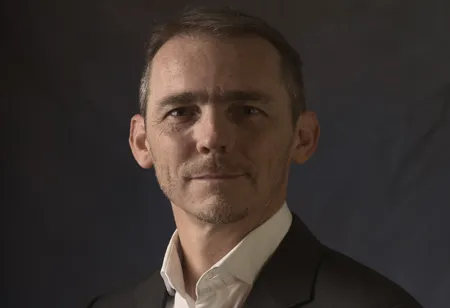Who doesn't like to enjoy a good cup of coffee? Only a few, apparently: coffee is – in fact - one of the most popular drinks in the world. However, brewing a good cup of coffee is not necessarily simple: there are many factors to keep in mind when preparing it, and they can be related both to raw materials (coffee itself) and to the extraction method (e.g. espresso, filter, cold brew, etc.).
However, Things have changed with the arrival of coffee capsules. Coffee cups are dispensed through a specially designed machine. This is the so-called ‘single-serve,’ a true revolution that, starting in the late 1980s, made coffee brewing simple and convenient for everyone, guaranteeing the quality and consistency of the drink.
Lavazza was one of the first companies to bring the single-serve to the market, launching the 'Espresso Point capsule system in 1989, first in Italy and later in Europe. Since then, Lavazza has developed and brought to the market other single-serve systems, such as BLUE, A Modo Mio, Firma and many others, each one with different characteristics designed to meet the needs of different consumer tastes (espresso coffee, filter, etc.), consumption locations (at home, in offices, restaurants, etc.), commercial channels and geographies. Lavazza has added the development and production of the dispensing machine to each capsule system, which is an essential tool for optimally dispensing the capsule.
Lavazza was one of the first companies
to bring the single-serve to the market,
launching the ‘Espresso Point’ capsule system in 1989, first in Italy and later in Europe
The complexities associated with such a broad portfolio are high, and in the meantime, many different technologies and processes are involved in making a capsule system. Over the years, we at Lavazza have realised that to guarantee excellence in developing this product, it is essential to add specific actions to the classic best practices. Mainly, there are two areas in which we have worked:
1. Multidisciplinarity and Expertise
The number of disciplines involved in developing a single-serve system is vast and heterogeneous. In fact, there are development competencies typical of the coffee roaster, such as:
● Agri-food knowledge for the green coffee part,
● Technology skills for roasting, grinding and degassing processes,
● Sensory skills for the designing and validation of the in-cup result,
● Flexible and rigid packaging development skills to wrap up the final product.
Then, additional competencies are necessary, such as:
● Design of functional primary packaging (the capsule itself),
● In-depth knowledge of materials which can be used for the capsules to guarantee their functionality under dispensing conditions (typically high temperatures and pressures),
● Complete design of the brewer, in particular the thermo-fluid-dynamic aspects and the electronic control part.
Over the years, Lavazza has built up the skills and resources to cover all these needs end-to-end. Today, this allows the company to effectively face the new challenges that the market proposes, such as the demand for compostable capsules to provide more sustainable solutions (and Lavazza is a pioneer here, having launched the first-ever industrial compostable capsule in 2015) or the expansion of the beverage offer by bringing filter coffee capacity to systems born for espresso: here is where multidisciplinary expertise allows to move with agility throughout all the disciplines that product development requires and to do so consistently and reliably.
2.
The System Approach
The multidisciplinary approach described above is transformed into value only when the organisation is focused on working in a holistic manner on the final objective: the best result in the cup (instead of - for example - the capsule, the machine, or the coffee roasting cycle, and so on).
This is what we at Lavazza call the 'system approach', i.e. the implementation of actions aimed at orienting the attitude of the project team towards the development of the product, be it machine or capsule, by putting key skills at the service of a single common goal, which is the business objective.
At Lavazza R&D, development with a system approach is ensured through a specific organisational structure that places people and their skills, no matter how heterogeneous, within the same working group, with common objectives and evaluation KPIs. Thus, the team's focus on the final objective is much more effective, and the different disciplines truly contribute to the result, preventing 'silos' and purely functional approaches.
A few examples: an espresso brewing time can be achieved by simultaneously acting on factors linked with different disciplines, such as the brewing machine pump, the grain size of the ground coffee, the material and thickness of the capsule, the duration of the coffee roasting cycle, and so on. Each problem, therefore, has a much wider range of possible solutions than a functional approach.
Similarly, the machine software developer can be decisive to the functionality of a capsule made of compostable material by developing an accurate dispensing temperature management that prevents exceeding the thermo-mechanical limits of the capsule material while guaranteeing a beverage in line with the requirements defined by the sensory team. Thus, the software development creates solutions to the problems of the material selector on the one hand and guarantees the tasting result on the other.
These opportunities for substantial collaboration could be missed if the team does not truly live the project 'under the same roof' in an organisational sense.
In conclusion, these approaches, which have been applied in the company for several years, have proved to be extremely effective both in terms of the actual technical result and the level of employee engagement, and, together with the continuous evolution of team skills from a multidisciplinary point of view, now constitute a fundamental pillar for the evolution and development of Lavazza's single-serve systems.



